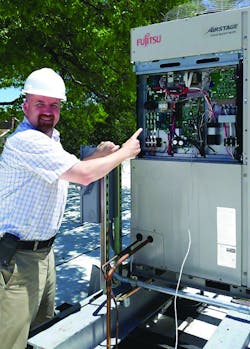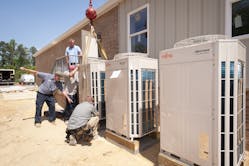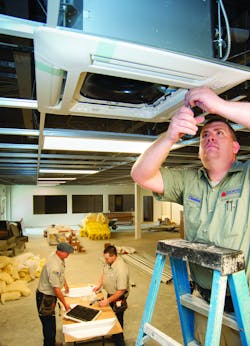With variable refrigerant flow (VRF) systems firmly established as comfort solutions, HVAC contractors are taking them on in addition to their traditional ducted products. How should a contractor go about making project assessments for a retrofit?
Brendan Casey, New York City Sales Engineer, Fujitsu General America, offers some advice:
“Installers should look at the existing HVAC system, and the building itself —and its use by people within the structure. If the existing system is outdated, and likely beyond “band-aid” repairs, those can be advantages for VRF.
“A sweet spot for VRF is a facility that’s broken into many smaller areas, each requiring zoned control — perhaps for tenant comfort. Central systems can’t provide many zones of control the way VRF can. Buildings with high occupancy, or those with a lot of computer equipment which produces heat, or those with varying exposure to solar gain throughout the day — these, too, point to the advantages of VRF.”
Q: What are the best ways to know when VRF is the way to go?
A: “VRF can be used for large spaces – say, a school gymnasium, for instance – but there’s real advantage that plays into VRF’s strength when a retrofit or new construction project is calling for HVAC comfort control to meet the needs of many smaller spaces. It’s hard to beat VRF for its many advantages in better control of temperature and humidity, and operational efficiency.
“Other advantages often include the ability of a building owner to shift responsibility of maintenance and operational cost to tenants.”
Q: Any observations you can provide about contractor acceptance and growing aptitude with VRF, based on your discussions or project visits?
A: “We are finding more and more installers with VRF capability, or interests in the technology. Those that make installing VRF central to their professional offering have the advantage of learning how incredibly flexible and versatile the technology is. Those firms not yet experienced with VRF — but have experience with refrigerant-based split systems, or refrigeration work — will find the transition to VRF easy. It’s also important to point out that Fujitsu’s VRF training is excellent, recognized as among the very best in the industry.”











